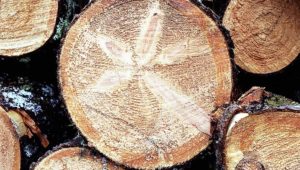Pinus strobus, commonly known as the eastern white pine, white pine, northern white pine, Weymouth pine, and soft pine is a large pine native to eastern North America. It occurs from Newfoundland west through the Great Lakes region to southeastern Manitoba and Minnesota, and south along the Appalachian Mountains and upper Piedmont to northernmost Georgia and perhaps very rarely in some of the higher elevations in northeastern Alabama, and is planted in areas near its natural range where summer temperatures are fairly moderate.
Pinus strobus is found in the nearctic temperate broadleaf and mixed forests biome of eastern North America. It prefers well-drained soil and cool, humid climates, but can also grow in boggy areas and rocky highlands. In mixed forests, this dominant tree towers over all others, including the large broadleaf hardwoods. It provides food and shelter for numerous forest birds, such as the red crossbill, and small mammals such as squirrels.
Eastern white pine forests originally covered much of northeastern North America. Only one percent of the old-growth forests remain after the extensive logging operations that existed from the 18th century into the early 20th century.

